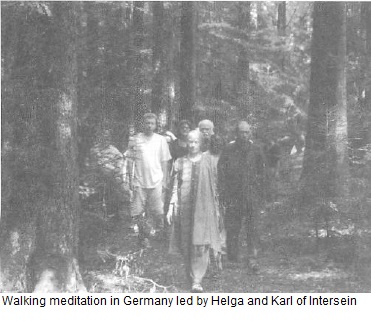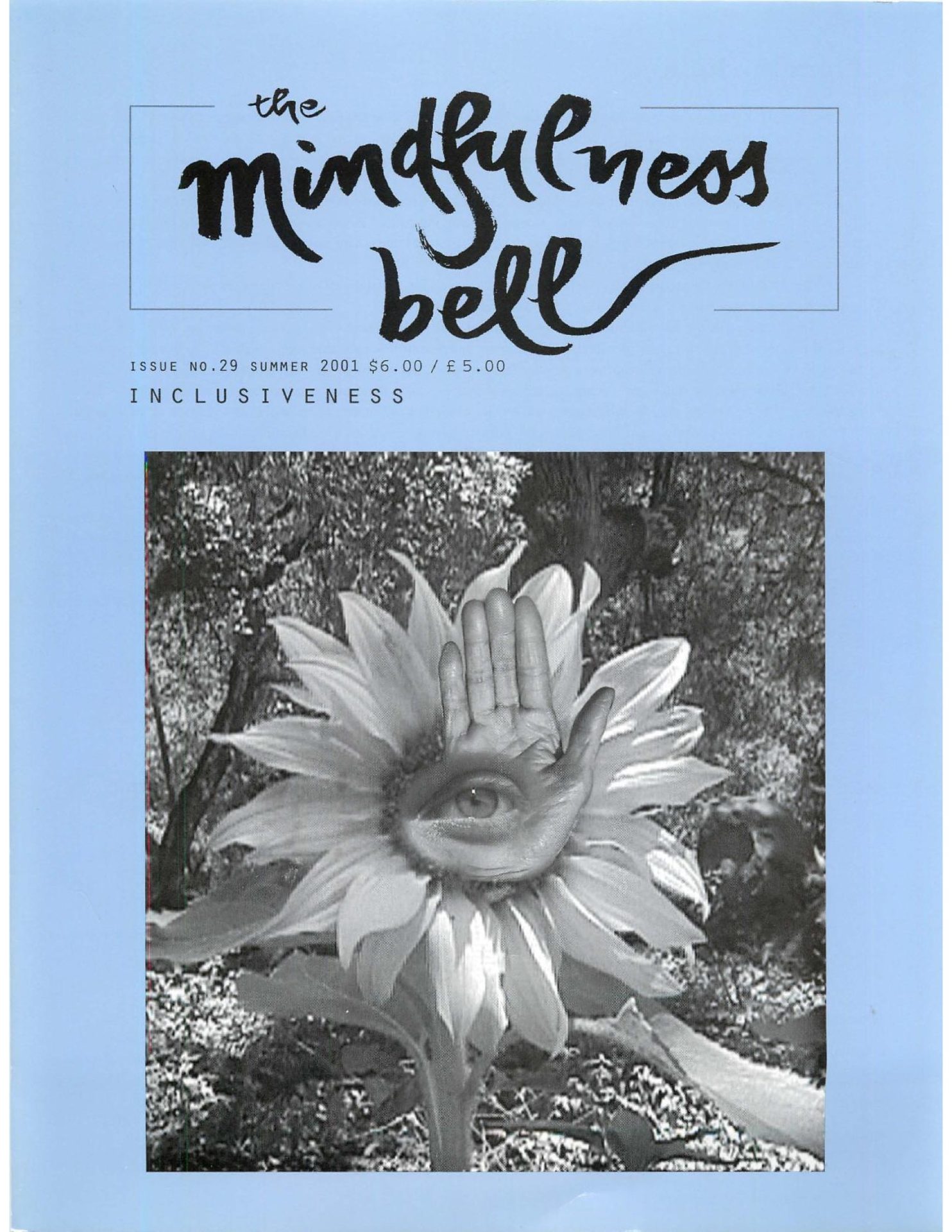Walking Meditation By Peggy Rowe Ward
The Education and Training Committee of the Order of lnterbeing developed a four-stage Education and Training Program in 1997. As a regular feature in The Mindfitlness Bell we will offer some of the suggested practice exercises and study work outlined in The Mindfulness Bell #21. We invite Order Aspirant Training programs throughout the world to share in future editions.
Practice Exercise: Sharing the Practice of Walking Meditation
Objective: To experience expressing the Dharma practice of walking meditation and to discuss skillful ways to share the practice with others.
Walking Meditation By Peggy Rowe Ward
The Education and Training Committee of the Order of lnterbeing developed a four-stage Education and Training Program in 1997. As a regular feature in The Mindfitlness Bell we will offer some of the suggested practice exercises and study work outlined in The Mindfulness Bell #21. We invite Order Aspirant Training programs throughout the world to share in future editions.
Practice Exercise: Sharing the Practice of Walking Meditation
Objective: To experience expressing the Dharma practice of walking meditation and to discuss skillful ways to share the practice with others.
Estimated Time: 45 minutes - 1 hour (15 minutes writing, 30-45 minutes discussion)
Supplies: Pen and Paper
1. Write a letter to a friend who does not know about our practice of walking meditation. Write to him or her in a way that will help him or her understand the practice and describe the benefits of this practice. Take 15 minutes for this exercise. Don't worry about spelling, punctuation, or editing. Just let your words keep flowing.
2. Invite some of the participants to read their letters.
3. Discuss the exercise in the whole group. The goal is not to do a perfect teaching in 15 minutes. A fast writing practice helps us get in touch with essence. Rather than critique individual practice writings, discuss what inspired you, what touched you, what was clear. What have you learned from doing the practice of walking meditation? What did you learn about teaching the practice of walking meditation? Discuss how the teaching can change based on who is the audience or student. Discuss the value of teaching from personal experience.

Here is an excerpt from our practice session at the Santa Barbara Order Aspirant Training. We had a great Dharma discussion from this exercise. Remember, this was written in 15 minutes!
Dear Aunt Bea,
It was great talking with you yesterday-happy 94! I think it's wonderful that you're the only person at Beth Shalom who walks daily. .. not that the other residents choose not to walk, but that you've been walking every day without fail, rain or shine, for the past sixty-some years. You probably have more to tell me about walking than 1 could ever tell you, but I want to share with you a kind of walking I do every day. It's part of my Buddhist practice, and it's called Kinh Hanh, or walking meditation. Usually I do it very slowly, but you can do it faster; too. I learned this technique from my teacher; Thich Nhat Hanh, who is a Vietnamese Zen monk living in France.
When I do Kinh Hanh, I 'm very conscious of my breathing. I take a step as I breathe in, and another step when I breathe out, and I walk with graceful balance and a subtly joyful presence. Upright and happy, like dancing the hora, but more slowly: that's how I imagine I'm carrying myself sometimes. I will alien attach special words to the in-breaths and out-breaths. These are called gathas, and my favorite one is: I have arrived/I am home. There's something about the combination of those words and the slow-walking that makes me feel at once safe, awake, filled with gratitude and childlike wonder; as though every cloud, every oak leaf, every cigarette butt, every bird, and every person is a miracle. You can also walk faster; taking several breaths with every step, while still saying the gatha. That's frequently how I gel around the world: step, step, step, I have arrived/step, step, step, I am home.
It would begin to walk in Philadelphia with you some time. You could try this practice, although I think you've been doing it all along in your own way. You call it "schlepping around the block, " and I call it Kinh Hanh.
Love, Michael
Peggy Rowe Ward, True Original Source, practices with The Still Water Sangha.
Photo courtesy of Plum Village

